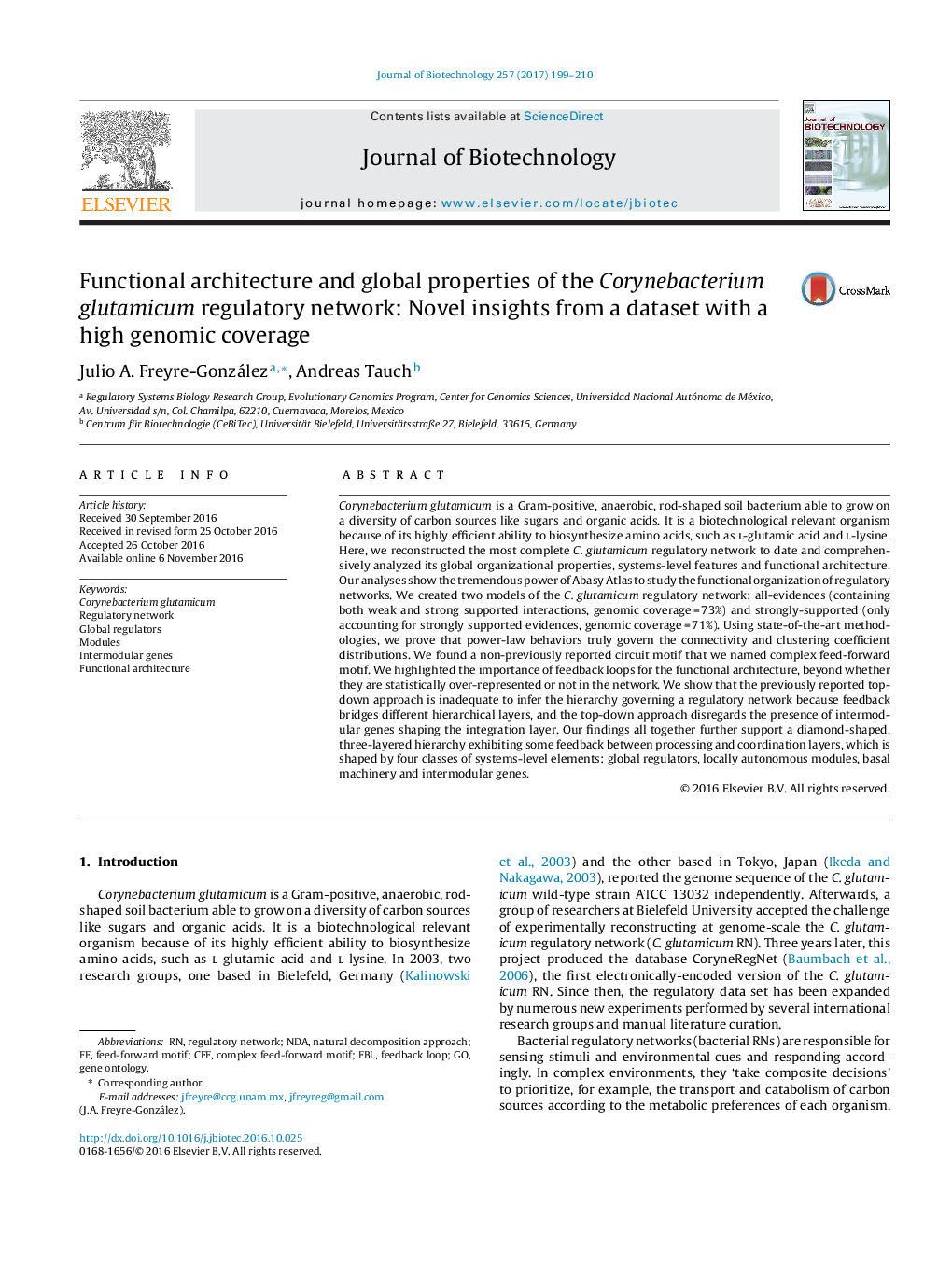| Article ID | Journal | Published Year | Pages | File Type |
|---|---|---|---|---|
| 6451926 | Journal of Biotechnology | 2017 | 12 Pages |
â¢We reconstructed the most complete C. glutamicum regulatory network to date.â¢Abasy Atlas has a tremendous power to study the functional organization of regulatory networks.â¢Power-law behaviors truly govern the connectivity and clustering coefficient distributions.â¢The top-down approach is inadequate to infer the hierarchy governing a regulatory network.â¢A diamond-shaped, three-layered hierarchy exhibiting some feedback governs the C. glutamicum regulatory network.
Corynebacterium glutamicum is a Gram-positive, anaerobic, rod-shaped soil bacterium able to grow on a diversity of carbon sources like sugars and organic acids. It is a biotechnological relevant organism because of its highly efficient ability to biosynthesize amino acids, such as l-glutamic acid and l-lysine. Here, we reconstructed the most complete C. glutamicum regulatory network to date and comprehensively analyzed its global organizational properties, systems-level features and functional architecture. Our analyses show the tremendous power of Abasy Atlas to study the functional organization of regulatory networks. We created two models of the C. glutamicum regulatory network: all-evidences (containing both weak and strong supported interactions, genomic coverage = 73%) and strongly-supported (only accounting for strongly supported evidences, genomic coverage = 71%). Using state-of-the-art methodologies, we prove that power-law behaviors truly govern the connectivity and clustering coefficient distributions. We found a non-previously reported circuit motif that we named complex feed-forward motif. We highlighted the importance of feedback loops for the functional architecture, beyond whether they are statistically over-represented or not in the network. We show that the previously reported top-down approach is inadequate to infer the hierarchy governing a regulatory network because feedback bridges different hierarchical layers, and the top-down approach disregards the presence of intermodular genes shaping the integration layer. Our findings all together further support a diamond-shaped, three-layered hierarchy exhibiting some feedback between processing and coordination layers, which is shaped by four classes of systems-level elements: global regulators, locally autonomous modules, basal machinery and intermodular genes.
